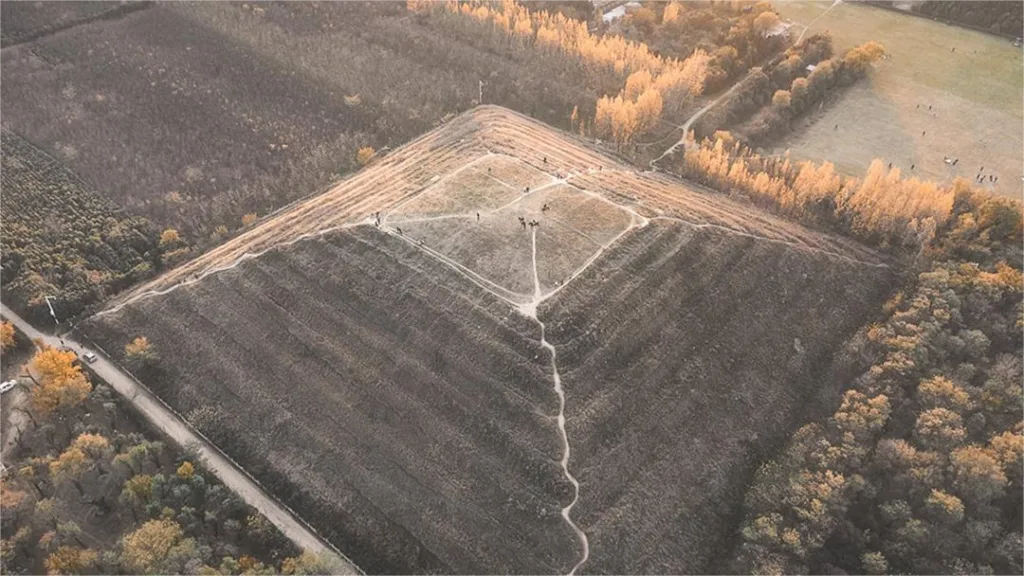西安金字塔中国古代帝王陵


Xi’an Pyramids, also known as the Western Han Imperial Mausoleums, are situated in the northwest part of Xi’an, Shaanxi Province, predominantly located on the plains of Xianyang’s Wulingyuan. Spanning an expansive area of 500 square kilometers, these tombs are not conventionally shaped like pyramids but rather massive structures with flat tops and four sloping sides, resembling ordinary mountains from a distance but revealing their uniqueness up close.
Arranged in a line across the plain, stretching over 10 kilometers, the three largest pyramids at the northernmost end are followed by others progressively decreasing in size towards the south. These pyramids boast an average height ranging from 300 to 400 meters, with the tallest reaching a remarkable 500 meters. Each side of the pyramids corresponds to one of the four cardinal directions – east, south, west, and north – and is distinguished by colors: black, red, green-blue, and white.
The Wulingyuan was the burial site of five emperors during the Han Dynasty, like Han Yang Ling Mausoleum and Maoling Mausoleum, situated in the northern part of the Guanzhong Plain, characterized by its fertile soil, open terrain, and stunning natural scenery. As such, during the pre-Qin, Qin, Han, Sui, and Tang dynasties, it served as a pivotal center for ancient Chinese politics, military affairs, and ideological and cultural development, shaping a unique cultural and geographical region that holds significant importance in China’s ancient civilization history.
The discovery of the Xi’an Pyramids was not made by local Chinese but rather by American pilots during World War II, who spotted them through aerial photography while passing over Xi’an. This revelation shocked and intrigued scholars because, for a long time, it was widely believed that only Egypt possessed pyramids. However, the “pyramids” in Xi’an are, in fact, ancient Chinese imperial tombs, fundamentally different in function and significance from those in Egypt. In Europe and America, lacking appropriate vocabulary to describe these flat-topped structures, they were compared to Egyptian pyramids and hence termed “Chinese pyramids.”